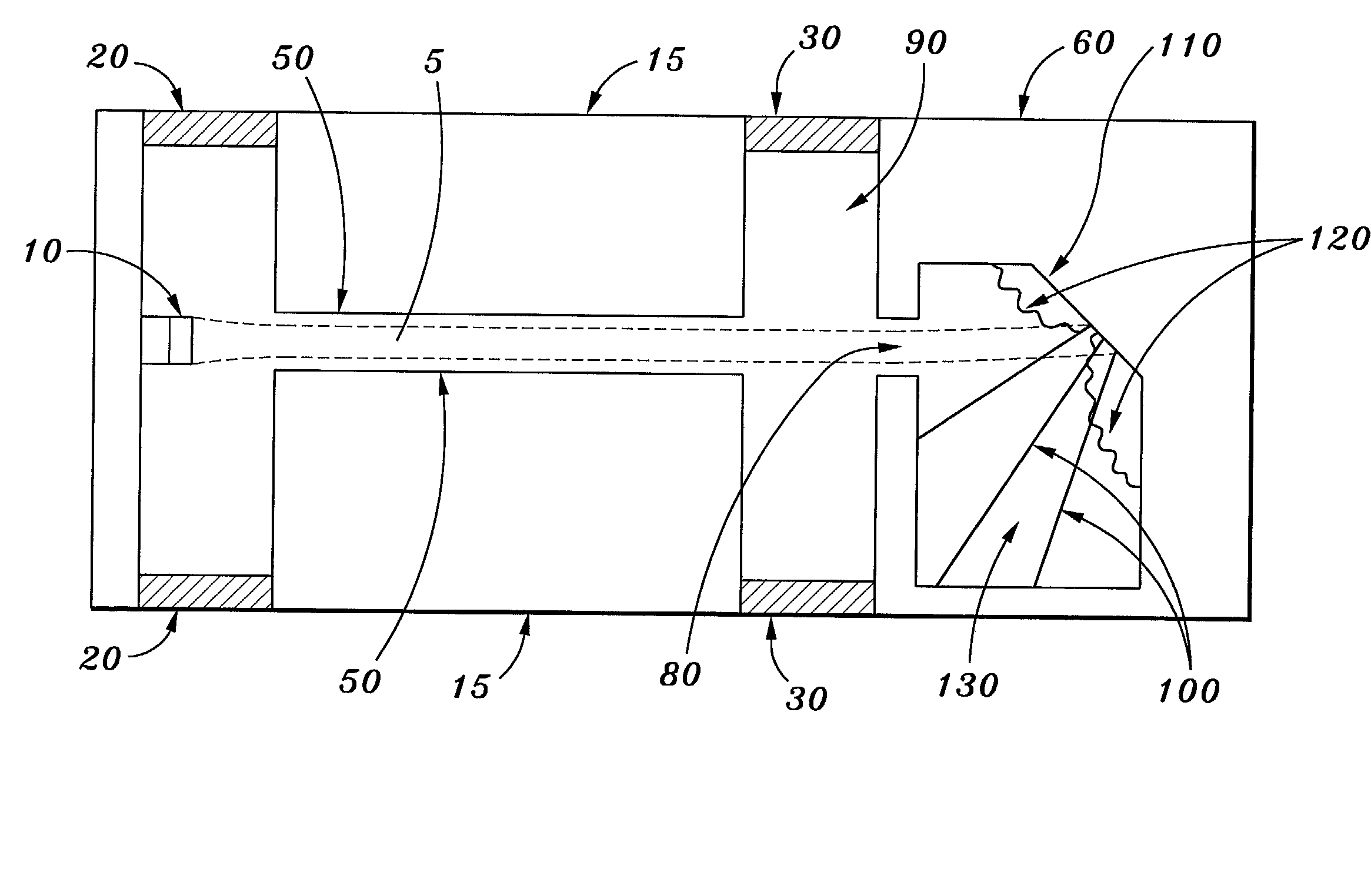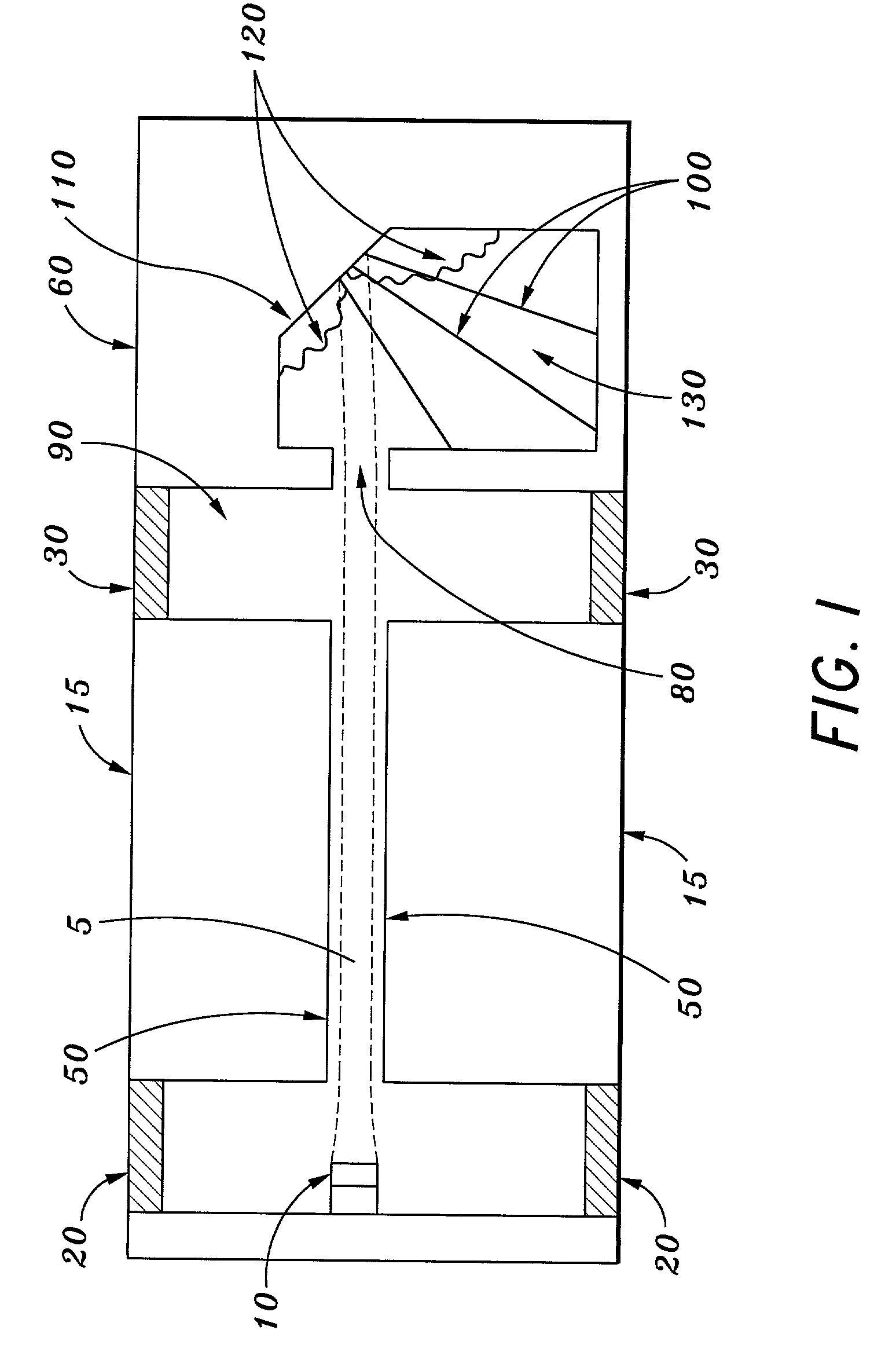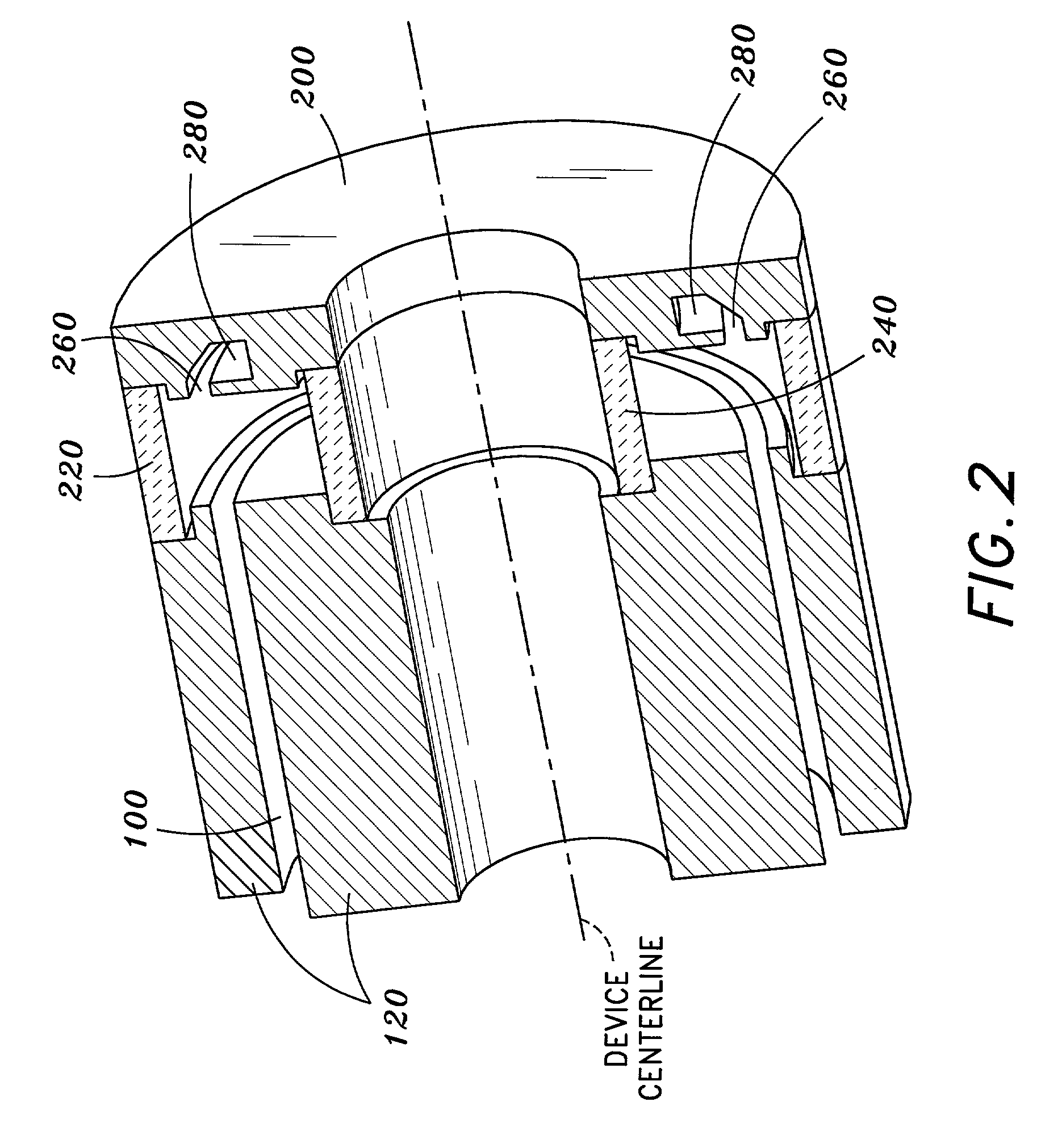Depressed collector for electron beams
a collector and electron beam technology, applied in the field of electromagnetically active sources, can solve the problems of not being able to implement such devices for use with sheet electron beams, unable to meet the techniques of many devices including the submillimeter frequency backward wave oscillator, and unable to optimize circuitry efficiency of klystron without efficiency optimization circuitry
- Summary
- Abstract
- Description
- Claims
- Application Information
AI Technical Summary
Problems solved by technology
Method used
Image
Examples
Embodiment Construction
[0016] The present invention provides a depressed collector capable of recovering energy from an electron beam emerging from the interaction region of a device producing electromagnetic wave radiation. The depressed collector incorporates an innovative electron trap and voltage depression to prevent the return of reflected electrons or true secondary electrons to the body or to the electron gun of the device.
[0017] The operation of a single stage depressed collector in accordance with an embodiment of the invention in conjunction with a submillimeter frequency Backward Wave Oscillator is schematically illustrated in FIG. 1. A rectangular, sheet electron beam 5 is emitted from cathode 10 and passes through a rectangular beam tunnel 50 through the body 15 of the RF (radio frequency) device. Cathode 10 is energized to a voltage below that of the body sufficient to provide the required electron energy for interaction with the circuit of the device. The voltage potential between cathode ...
PUM
 Login to View More
Login to View More Abstract
Description
Claims
Application Information
 Login to View More
Login to View More - R&D
- Intellectual Property
- Life Sciences
- Materials
- Tech Scout
- Unparalleled Data Quality
- Higher Quality Content
- 60% Fewer Hallucinations
Browse by: Latest US Patents, China's latest patents, Technical Efficacy Thesaurus, Application Domain, Technology Topic, Popular Technical Reports.
© 2025 PatSnap. All rights reserved.Legal|Privacy policy|Modern Slavery Act Transparency Statement|Sitemap|About US| Contact US: help@patsnap.com



